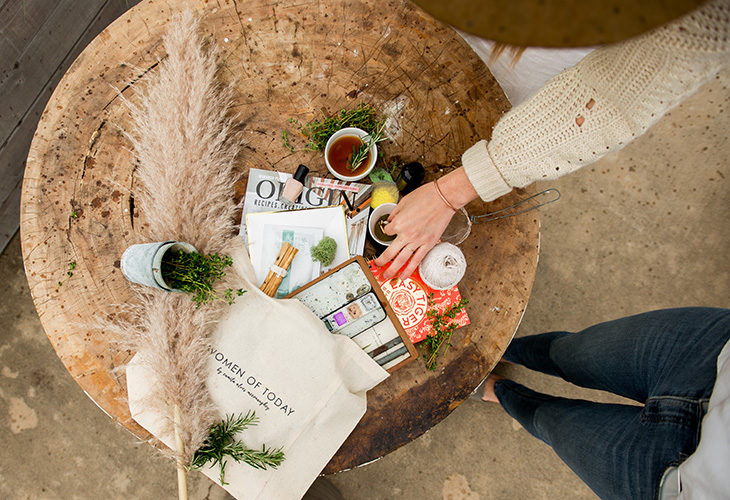Ok... We are going to talk about something that it is NOT Sexy and NOT fashionable, BUT extremely important for you to feel sexy and for you to get fashionable!
Let’s have a “SUGAR TALK“
or should I say the
NO ADDED SUGAR TALK.
NOW, I still have my sweets, but after learning all this, I only have a fraction of what I used to have, and I feel better. My health is better, I have been able to keep my weight managed, I experience fewer mood swings, my skin is better, I can control my cravings, and I understand that I am not feeding bad things into my body. It is a win-win situation.
Throughout our WOT Sugar Talks Series, we shared a lot of great information with you — Including experts and specialists who educated us with the information I have learned in the last few years on why sugar is so bad for us in so many ways. I really wanted to give our community the tools and knowledge to do the right thing by you in your own way! For lifelong changes of habits for the best!
If it helped me, it could help you as well… Who’s up for the challenge?
I hope you can explore our WOT Sugar Talks Series and enjoy it!

Here are some tips on How To Wean Yourself Off Sugar via Prevention Magazine.
Yep, it seems like a no-brainer—a diet high in the white stuff (sugar and refined carbs) is linked to weight gain, diabetes, cancer, depression, and even cognitive problems—but kicking the habit isn’t that simple.
With the help of Laura Schoenfeld, RD, holistic nutritionist turned business coach at Laura Schoenfeld Coaching, and Gina Hassick, RD, nutritionist at Eating Well with Gina, we’ve outlined the most effective way to free yourself from the grips of all things frosted, candy-coated, and caramel-filled.

1) Pick a Plan That Fits Your Personality: Cold Turkey or Gradual Tapering
People who have trouble eating sweets in moderation (e.g. you keep taking slivers of brownie until half the pan is gone) often do really well with a cold turkey approach, says Schoenfeld. For them, 3 to 4 weeks of nixing all added sugars and refined carbs—which act like sugar in the body—is often just what they need to reset their taste buds, lessen their compulsion for sweets, and start craving more whole foods. The benefit of doing this for several weeks, not just one, is that you give yourself adequate time to create new healthy habits in place of the old ones. After that, you’re at a point when you can safely start reintroducing small amounts of some of the foods you eliminated without going overboard—if you even want to, that is.
If strict dietary rules stress you out, and being told to eliminate something makes you want it that much more, gradually tapering your sugar intake while allowing yourself treats in moderation might work better. Hassick suggests gradually diluting your sugar-sweetened drinks with more water over time; adding fresh fruit to yogurts (beware of these high-sugar yogurts) and oatmeal instead of maple syrup or honey; switching from white refined grains and breads to fiber-rich whole grains; and shrinking dessert portions, or only consuming dessert on certain days or occasions.
2) Set Up Your Plate to Banish Cravings
The way you formulate your meals can go a long way in banishing sugar cravings and helping you avoid impulsively eating sweets. “Many of my female clients who are attempting to cut out sugar don’t eat enough, which can lead to cravings,” says Schoenfeld. “Simply loading up on enough healthy whole foods at all three meals, breakfast, in particular, can greatly reduce these. Eating plenty of protein at each meal, especially breakfast, is also crucial, as it helps keep blood sugar stable and is the most satiating macronutrient. Each meal should have at least 20 g of protein—about 3 oz. of animal protein or 1-1/4 cups beans or lentils.”

3) Satisfy Your Sweet Tooth the Right Way
Some people get overzealous and totally eliminate fruit when cutting back on sugar, but that’s not necessary, says Schoenfeld. In fact, fruit can be your secret weapon, quelling sweet cravings while delivering healthy nutrients, like fiber, that keep blood sugar stable compared to other sweet foods. “I really enjoy having frozen fruit with a little heavy cream or coconut milk as a dessert, and bananas are a fantastic portable snack,” says Schoenfeld. “Up to three servings a day are fine for someone cutting back on sugar, but try to avoid dried fruit, as that’s easy to overeat and contains as much sugar as candy.”

4) Don’t Rely on Artificial Sweeteners
Finally, don’t consider artificial sweeteners a free pass. If anything, these lab-made, calorie-free powders can make you more of a slave to sweet foods. Because they’re many times sweeter than sugar, they essentially dull your taste buds and make you crave things with similar levels of sweetness. So after a while, naturally sweet foods like fruit just don’t cut it anymore, while high-sugar and high-calorie candy, cookies, and soda will have you salivating. If you’re looking for something better than sugar to add to your coffee, skip the Splenda and Equal and try something like cinnamon for a natural, subtly sweet taste and no calories.

















